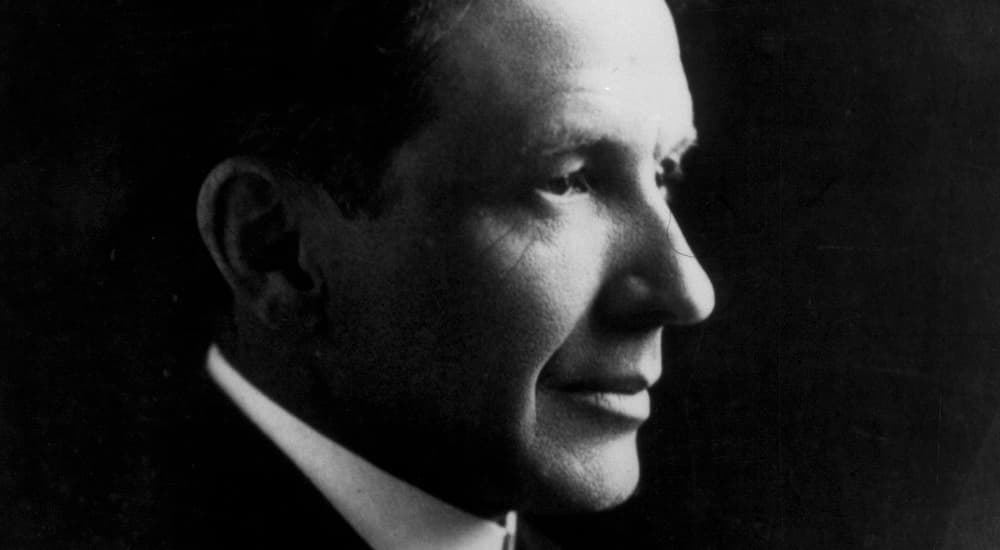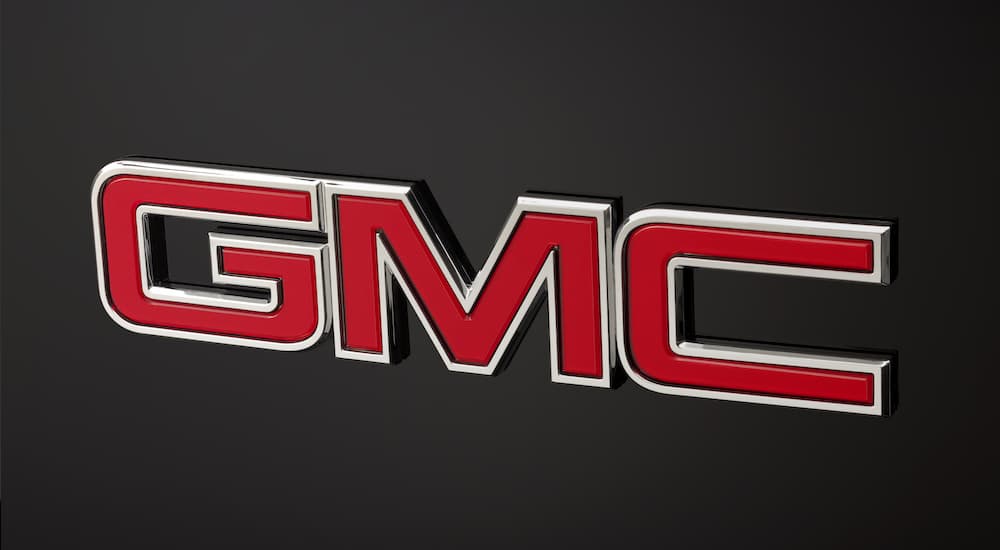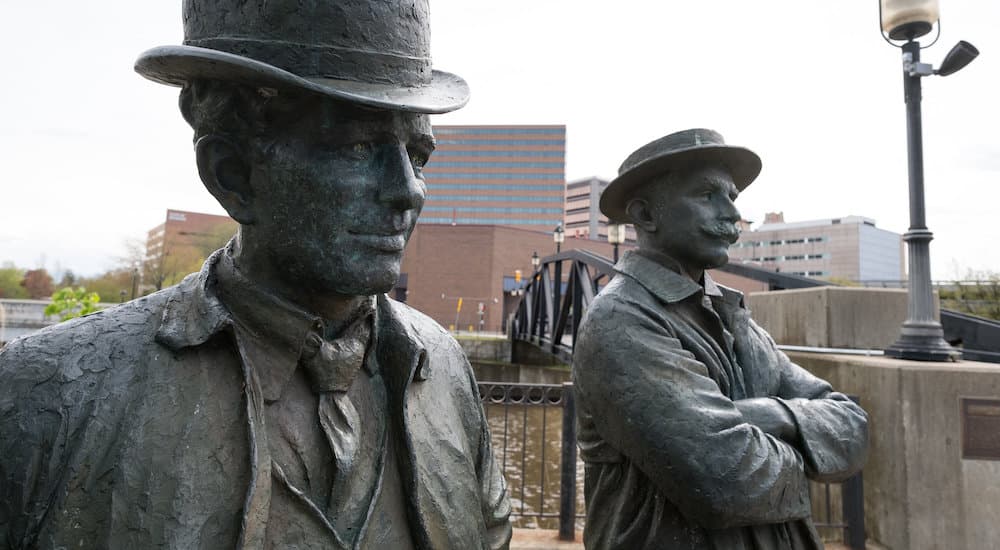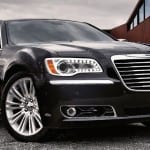Have you ever heard the phrase, “Go big or go home?” No, we’re not suggesting that your search for a “GMC dealer near me” end with a heavy-duty workhorse like the GMC Sierra 3500 HD, at least not unless you need a road warrior of that stature and capability. Instead, we’re setting the stage for the man behind the GMC brand, the founder of General Motors himself––William “Billy” Crapo Durant.
Durant was a pioneer in the American automotive industry and lived by the modern-day mantra that encourages us to live our lives to the fullest. For Durant, that meant constantly working toward his overarching dreams of success, at which he often overreached and frequently failed. Despite this, however, he picked up the pieces time and time again, establishing his reputation as one of America’s most charismatic dealmakers and the founder of one of the largest companies in the world.
What inspired Durant’s passion for the automobile and his dream to build a legacy in the American automotive industry? It’s a story that starts with humble beginnings, dabbles in frequent failures interspersed with jaw-dropping successes, and ends with a surprising plot twist as good as any Shakespearean tragedy. Here’s the man behind General Motors.
Early Years = Early Successes
William Crapo Durant was born on December 8, 1861, in Boston, Massachusetts, to William and Rebecca Durant. His mother came from a wealthy French family from Massachusetts, but Durant spent what historians call a “turbulent” childhood in Flint, Michigan. By the time he reached high school, he had little interest in his studies and eventually dropped out of school to work at the lumberyard owned by his grandfather, Henry H. Crapo, who also served as the governor of Michigan.
Durant’s entrepreneurial spirit blossomed, and he left the lumberyard to sell cigars. Within a few years, he teamed up with fellow businessman Josiah Dallas Dort to start the Flint Road Cart Company. Under Durant’s leadership, the carriage company flourished. He turned the $2,000 start-up capital into $2 million and established the company as the leading manufacturer of horse-drawn carriages in the country. Ironically, Durant believed wholeheartedly in the trusty horse over the automobile, which he felt was dangerous and loud.
Durant’s opinion on the automobile shifted when James Whiting hired him to run the struggling Buick Motor Company in 1904. Once again, Durant’s savvy business sense turned the company around, and Buick became the best-selling automobile in America. This ongoing success pushed Durant to dream bigger. At the risk of everything, he sought to combine all the top automobile manufacturers in America into a single massive corporation.
Big Dreams = Big Risks
Buick’s success made it the foundation of Durant’s future vision, especially since he signed a 15-year contract with Canadian automobile manufacturer Samuel McLaughlin that guaranteed Buick’s success for the next decade. Durant hoped to merge Buick with Ford, Maxwell-Briscoe, and Oldsmobile, which meant every company had to agree to the terms. However, this proved harder than Durant anticipated and made securing financing impossible. Refusing to abandon his dream, Durant persevered.
Using his charisma to his advantage, Durant risked everything when he established the General Motors Holding Company in 1908. Over the next few years, he brought his vision to life, buying a new automobile company each month. Before long, he acquired Oldsmobile, Pontiac, Cadillac, and an assortment of automobile suppliers. Durant even attempted to buy the Ford Motor Company, but Henry Ford’s high price was out of reach even for Durant.
Although Durant brought his vision to life, the rate at which he accomplished such a feat came at a high cost. By 1910, General Motors was in financial disrepair and faced a cash shortage that left little hope for the company’s future. As a result, Durant was ousted from the company but refused to accept defeat. Within a year, he teamed up with race car driver Louis Chevrolet to establish Chevy and hired his business partner, Josiah Dallas Dort, to run the company. Dort stayed at the helm of Chevy for a few years before growing tension led Dort to step down and forced Durant to sell his share in the carriage company.
Durant’s strained relationship with investors and business partners like Dort characterized many of his future business dealers; however, it didn’t stop him from pursuing his dreams of returning to General Motors. He appointed Samuel McLaughlin to run Chevrolet in 1915, and by 1916, the company earned enough profits for Durant to regain control of General Motors. Finally back at the helm, Durant spent the next four years running GM, during which time he accrued massive debts as he started dabbling on Wall Street.
Facing the End
Durant’s growing financial struggle left him no other choice but to make a deal to resign from his position with GM in 1920 to satisfy his debts. With Durant finally back in the clear, he didn’t waste any time and established Durant Motors in 1921. But unfortunately, his timing was terrible, and the Great Depression ended Durant’s automotive dreams by 1933. This failure and years of significant losses on Wall Street left Durant bankrupt by 1936.
Surviving on support from friends, Durant wasn’t ready to hang up the towel and later opened a bowling alley and restaurant in his hometown of Flint, Michigan. As with every other endeavor, Durant believed his family-friendly bowling alley was the next big thing in America and planned for it to go nationwide with a projected chain of 30 venues. The idea, however, was ahead of its time and left Durant to rely on Walter Chrysler and Alfred Sloan for financial support. Fortunately, the automotive pioneers were well-versed in Durant’s overreaching dreams.
Durant’s last-ditch efforts for success came in the late 1940s when he traveled to Nevada with plans to open a cinnabar mine that he hoped the government would finance through defense contracts. Durant’s trip nearly cost him his life as the 80-year-old suffered a massive stroke once he returned home. Even though the stroke left him partially paralyzed, Durant continued working and set out to start a hair tonic business. However, his final scheme never got off the ground as his health declined, leaving him unable to speak. He later slipped into a coma and died on March 19, 1947, leaving his family bankrupt.
Durant the Dealmaker or Durant the Dreamer?
Durant’s success in establishing General Motors isn’t questioned. GM proudly stands as one of America’s “Big Three” automakers, with brands like GMC, Chevy, Buick, and Cadillac in its fleet. In this regard, Durant brought his vision to life. He created an automotive conglomerate held up by best-selling nameplates. Even more impressive is that his approach was proven; he didn’t have to reinvent the wheel since he established the same setup with his carriage company.
But is Durant’s success with GM enough to make him one of America’s most charismatic dealmakers? Or did his hurried schemes, lifelong financial struggles, and overarching dreams overshadow his accomplishments? Today, we’re accustomed to rags to riches stories that challenge us to think outside the box, dream big, and pursue our dreams because of the potential payoff. However, Durant’s story is quite the opposite of a rags to riches tale and shows the depth and determination of an American businessman who put everything he had on the line for his dreams. The ebb and flow of his success is an accurate American tale of perseverance, making Durant a pioneer, a charismatic dealmaker, and a dreamer in every sense of the word.






